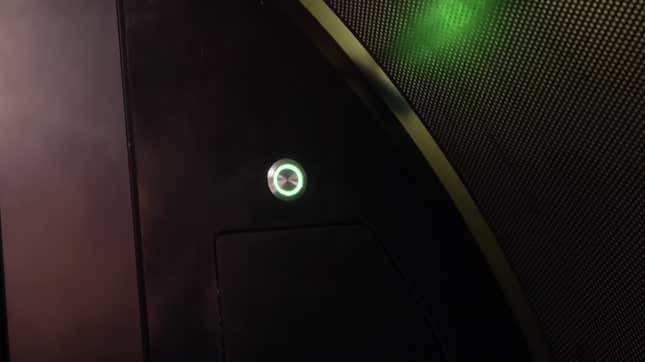This week the world was glued to coverage of the disaster of the Titan, the missing tourist submersible meant to explore the wreck of the Titanic. After a frantic, multinational search operation, an underwater drone today located a “debris field” on the ocean floor in the search zone. Sadly, it was soon confined that the debris came from the Titan. According to the Coast Guard the debris is consistent with a sudden “catastrophic implosion” of the craft that resulted in the immediate deaths of all five people aboard.
Such a dramatic and fast-breaking story inevitably comes with misinformation and jumping to unwarranted conclusions. Below is some of what people got wrong about the Titan submersible tragedy.
The Titan was not a submarine
A submarine is an underwater craft that has enough power to leave port and return to port with no outside help. A submersible is an underwater craft that requires a larger mothership to launch and retrieve it.
People not immediately understanding the difference between a submersible and a submarine is understandable, but the difference is key in explaining what may have gone wrong. Submersibles are used for short jaunts underwater; submarines can often stay submerged for months. A submersible losing communication with its mothership, like the Titan did on Sunday, is a big problem, especially since the craft could only be navigated via text messages from the mothership (more on that shortly).
The Titan was meant for short trips underwater, somewhere around 10 hours at a time, so it did not have enough power to travel very far underwater. Some submarines can stay beneath the surface for months, travel thousands of miles, and even make their own oxygen. The Titan was designed to quickly sink down to 4,000 meters, but not to travel very far horizontally far from its launch platform and mothership.
The Titan may have been controlled with a game controller, but that’s not as bad as it sounds
In a 2022 interview with CBS Sunday Morning, OceanGate CEO and founder Stockton Rush showed off a device that looks exactly like a Logitech F710 wireless gamepad (currently retailing for $29.99 on Amazon) and said, “We run the whole thing with this game controller.”
This revelation understandably led to disbelief online, but there are couple issues with the widespread perception of the controller as evidence that the craft was a jerry-rigged nightmare.
Leaving aside the overall jankiness of the craft, we don’t actually know whether this controller was used to pilot the craft in 2023. It could have been changed since the original interview in 2022. We also don’t know whether the controller was modified, or what changes were made to it. As yet, OceanGate has not responded to media requests for comment.
Steven Wright, an aerospace professor interviewed by CBS News, points out that the joysticks that have been used in aviation and in submarines/submersibles for decades are fundamentally the same as video game controllers. They’re a joystick that acts an input device for a computer. Wright speculates that the Titan’s navigation system probably didn’t depend on a single game controller, and points out that there was probably a backup method for control.

The Titan was basically designed to sink and surface, and judging from the tour of the craft on CBS’s report, the “up and down” movement (basically, dropping off weight to return to the surface) was controlled from the pushbutton you see above, not the gaming controller.
Even if the vessel was controlled with an off-the-shelf video game controller, it’s hard to see how it would have mattered. The Titan suffered a catastrophic implosion that was not caused by a controller malfunction.
Was it all Elon Musk’s fault?
After the news broke that Titan had lost communication with its mothership, various media sources reported that OceanGate was using Elon Musk’s Starlink satellite system to communicate. This led to speculation that the communication problems could have been caused by Musk’s system.
This is (mostly) false. While OceanGate Expeditions’ did use Starlink to access the internet on the open ocean, the communication between the submersible and the mothership was neither internet- nor satellite-based. According to the experts, the Titan was linked to its mothership via a sonar system that allowed for acoustic positioning and the sending of short text messages. Musk’s space internet had no role in this tragedy.
When did the crew most likely perish?
On Wednesday, the U.S. Coast Guard announced that sonar buys deployed by the Canadian air force recorded underwater noises on both Tuesday and Wednesday, leading to hope that they originated from the Titan. It seems the sounds came from something else: Remote-controlled underwater vehicles surveyed the location from which the sounds originated and found nothing, and the Coast Guard later confirmed that there was no connection between the sounds and the Titan.
According to the Coast Guard, the massive pressure of the deep sea most likely crushed the craft in an instant as it made it descent. The passengers likely died before they even had time to realize there was a problem—certainly a fate preferable to the slow suffocation they might have suffered had the craft’s mechanics failed while it remained intact.
The dead include:
- Hamish Harding, a British businessman and explorer who has been called a “living legend of aviation.”
- Shahzada Dawood, a Pakistani businessman.
- Suleman Dawood, Shahzada Dawood’s son.
- Paul-Henri Nargeolet, a 77-year-old French explorer, and director of underwater research at a company that owns the rights to the Titanic wreck.
- Stockton Rush, OceanGate, Inc.’s CEO and founder.

Comentarios recientes